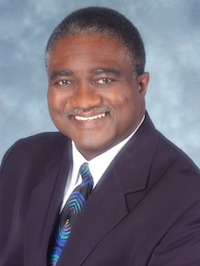May 1, 2015

George E. Curry, NNPA Columnist
When the Supreme Court gutted a key provision of the 1965 Voting Rights Act nearly two years ago in Shelby County v. Holder, many of us suspected that Chief Justice John Roberts in particular was distorting the severity of voting violations in jurisdictions covered by the act. As a popular GEICO commercial says, now we know.
We now know because of extensive research conducted by William R. Kenan, Jr., a professor at the California Institute of Technology, titled, “Do the Facts of Voting Rights Support Chief Justice Roberts’ Opinion in Shelby County?”
By a vote of 5-4, the Supreme Court struck down as unconstitutional Section 4 of the law that requires certain jurisdictions with a proven history of racial discrimination to pre-clear any changes in their elections – such as redistricting, annexations and switching to at-large elections – with either the Justice Department or the federal District Court in Washington, D.C.
Despite renewals of the Voting Rights Act by Congress in 1970, 1975, 1982 and a 25-year extension in 2006, Roberts contended that the preclearance provision was no longer needed.
Writing for the majority, Roberts said, “…But history did not end in 1965. By the time the Act was reauthorized in 2006, there had been 40 more years of it. In assessing the ‘current need’ for a preclearance system that treats States differently from one another today, that history cannot be ignored. During that time, largely because of the Voting Rights Act, voting tests were abolished, disparities in voter registration and turnout due to race were erased, and African-Americans attained political office in record numbers. And yet the coverage formula that Congress reauthorized in 2006 ignores these developments, keeping the focus on decades-old data relevant to decades-old problems, rather than current data reflecting current needs.”
However, as Kenan points out in his research, “Neither the Chief Justice nor any scholars or civil rights proponents or opponents have systematically examined the evidence on the entire pattern of proven voting rights violations over time and space.”
Kenan examined the issue by compiling what he called the largest such database in existence, including numerous maps to make his point.
“Congress in 2006 was not presented with maps or other documents that laid out the pattern of proven voting rights infractions so starkly, but it received plentiful evidence in the form of lists and discussions of cases that showed that the problems were still overwhelmingly concentrated in the South and that discrimination continued to be widespread,” he wrote.
“And the map would have shown that the number of voting rights infractions had increased, not decreased, compared to the earlier period.”
Kenan explained, “An objective observer in 2006 comparing the number and location of all successful voting rights events in the period since the last renewal in 1982 with the events of the years from 1957 to 1981 would conclude that Section 5 needed to be renewed, and that the coverage scheme still fit the problem remarkably well, hitting the target about 94% of the time.
Even among Section 2 cases, which could be filed anywhere in the country, 83.2% of the successful cases from 1982 through 2005 originated in covered jurisdictions.” Roberts was joined by the court’s conservative majority, including Clarence Thomas. As usual, Thomas asked no questions during the proceedings. In his concurring opinion, he stated, “I join the Court’s opinion in full but write separately to explain that I would find Section 5 of the Voting Rights Act unconstitutional as well.”
That comes as no surprise.
But what did come as a surprise, as I have written here, was that the National Black Chamber of Commerce (not to be confused with the U.S. Black Chambers, Inc.), established by Harry C. Alford and his wife, Kay, filed a brief in support of Shelby County mirroring the objections raised by John Roberts.
In its shameful friend-of-the court brief, it claimed, “Section 5 is no longer necessary to combat widespread and persistent discrimination in voting and now, perversely serves as an impediment to racial neutrality in voting and to the empowerment of state and local officials who represent minority constituencies.”
The research undercuts the premise advanced by John Roberts and Harry Alford’s group and notes the role courts play in undermining access to the ballot box.
Professor Kenan wrote, “…by rendering decisions that make it easier or harder to bring and win voting rights cases or make objections, the Supreme Court can, in effect, manipulate the evidence of discrimination, which it can then use, in a second stage, to justify a decision to further weaken or strengthen the tools. It can create the reality that it subsequently reacts to. The Rehnquist and Roberts Courts have done exactly that.”
George E. Curry, former editor-in-chief of Emerge magazine, is editor-in-chief of the National Newspaper Publishers Association News Service (NNPA) and BlackPressUSA.com.

